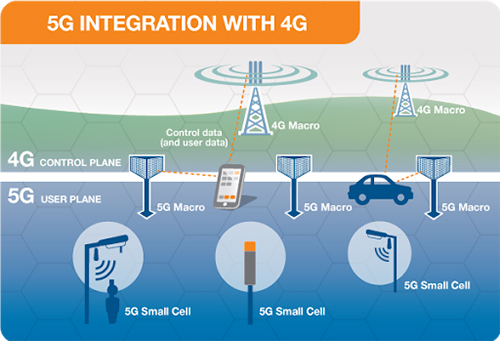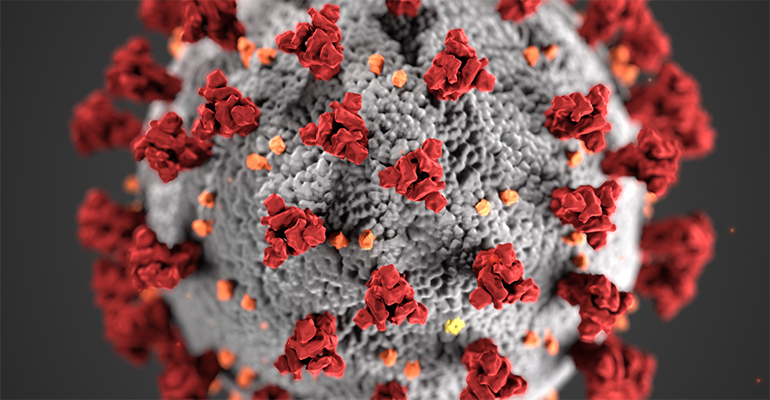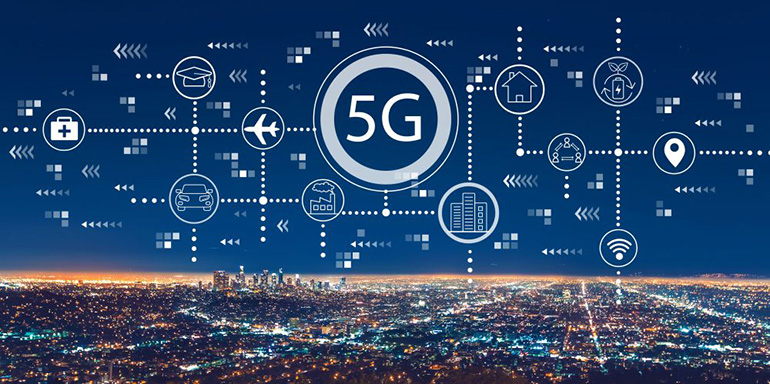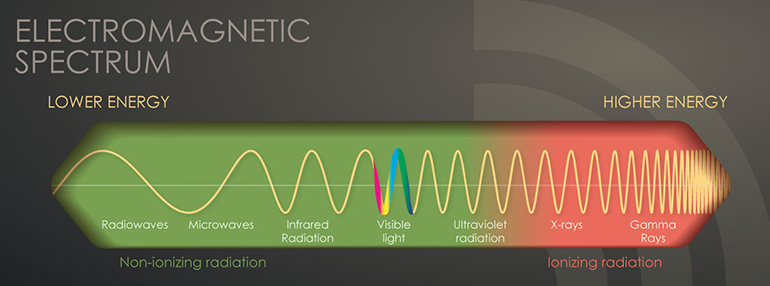It’s a conspiracy theory making the rounds across the globe, but amidst the hysteria are the facts that show no actual correlation between 5G network technology and the coronavirus.
Matters of science generally work toward discovering absolutes, though it may take years and painstaking work to eventually get there. Tying 5G and COVID-19 together is convenient for those with an axe to grind or money to make from a gullible public, but even in this era of “alternative facts,” actual verifiable fact should still be the order of the day.
In such a hyperpartisan world, cynical viewpoints are unsurprising. Yet this axis of technology and science suggests a world-changing network is somehow responsible for a virus that will likely infect millions before it is either controlled or eradicated.
But is it true? No, and here’s why.
The theories
By now, many know that 5G is the next-generation wireless network that will succeed the current 4G LTE network, promising blistering speed and access. It will also likely play a transformative role in a variety of industries, including automotive, healthcare, agriculture and education, among others.
The prevailing theories on social media and other corners of the web not only suggest, but proclaim, that the technology is fueling the spread of the coronavirus. Some are pointing to a far-reaching conspiracy aimed at everything from mind control through embedded microchips to a genocidal attempt to depopulate the planet. Bill Gates is only one of the well-known figures being dragged through the proverbial mud, with allegations putting him on the same level as tyrannical mass murderers like Hitler, Stalin and Mao.
It’s the stuff of dystopian fiction, but many are convinced these things are unfolding in reality, and that technology is to blame. There are a number of holes in these theories, and while I may not be able to cover them all, I will address some of the key ones.
Where 5G doesn’t fit in
First, is the fact that 5G is nowhere near full capacity in deployment. Network coverage is in its infancy, as evidenced by coverage maps here and here, and even then, they’re overwhelmingly concentrated in certain cities. Even if you believe that Wuhan, China, the epicentre of the coronavirus, was a 5G testing ground, it begs the question of why the virus didn’t grow out of control in other larger cities, like Shanghai, Beijing and Shenzhen — all of which had faster 5G deployment.
China also didn’t turn off 5G once the pandemic took hold, so if the waves did cause the virus, would it not be logical that people would get sick just by using their phones or staying put at home? While that country’s government is hardly an open book, the evidence shows that infections were positively affected by the massive lockdown. And yet, people there were freely able to use 5G connectivity throughout. The theory also doesn’t explain how countries without a 5G network right now — Iran, Japan and Brazil — are all dealing with rising case numbers.
 Moreover, 5G is running on the same underlying technology as LTE. Sure, there will be new towers and repeaters to help propagate and increase redundancy to eliminate latency and dropouts. And yes, there will be greater radio frequencies used, but the way the network spreads won’t be dramatically different, especially in the near term.
Moreover, 5G is running on the same underlying technology as LTE. Sure, there will be new towers and repeaters to help propagate and increase redundancy to eliminate latency and dropouts. And yes, there will be greater radio frequencies used, but the way the network spreads won’t be dramatically different, especially in the near term.
For example, 4G LTE uses what are called “sub-6GHz” frequencies, meaning only those that fall under that number. Network operators and wireless carriers will eventually look to use what are called “millimetre wave” frequencies that are 24GHz and higher. No carrier is currently using any frequency in that range for any network. In fact, China’s 5G network has stuck to sub-6GHz frequencies to date.
That’s basically a continuation of what was already there. All around the world, and even here in Canada, carriers have used sub-6GHz radio signals for their existing LTE networks. Your Wi-Fi router at home also distributes your Internet connection within that range. That’s why you may see 2.4GHz and 5.0GHz on dual-band routers. Heck, even your microwave and cordless phone (if you still have one) work on those oft-used frequencies.
With all that infrastructure already in place, wouldn’t it stand to reason that COVID-19 — or any virus, for that matter — would have incubated itself long before? It didn’t because it’s simply not possible.
The science involved
At no point in history have radio waves triggered a virus in a living creature, much less spreading a respiratory pathogen as contagious as COVID-19 has proven to be. If it’s radiation you’re concerned about, that’s a different issue, but also one with an explanation.
Radiation can be ionizing, like UV rays, Gamma rays and X-rays, or non-ionizing, like radio, microwave and light. Higher exposure to ionized radiation could have a detrimental impact on one’s DNA because it can cause tissue damage or cancer. That’s why doctors often limit patients’ access to X-rays and CT scans, and suggest protecting skin from harmful UV rays, for example.
Non-ionized radiation, on the other hand, is far more ubiquitous. It’s in connected homes, smartphones, devices, power lines, cellular towers and other items that emit electromagnetic fields. However, these are routinely low because government regulations restrict them. While long-term exposure hasn’t drawn lasting conclusions, it is clear that it has no effect on DNA, nor any correlation with 5G.
The International Commission on Non-Ionizing Radiation Protection (ICNIRP) conducted a study concluding 5G exposure was not a threat to one’s health. The study shows that current signal levels are far lower than its own recommendations, only cautioning against long-term exposure to millimetre wave frequencies at the highest strengths. It’s well-founded advice, considering that 300GHz is the limit set by various bodies around the world, except 5G likely won’t ever get that high. It’s slated to stick to a range under 100GHz.
This is an independent organization unaffiliated with the World Health Organization (WHO) and corporate sponsorship, so it isn’t toeing a party line. Taking a look at its past research shows a history of objective feedback on all things related to non-ionized science.
There has been no identifiable or confirmed connection between the signal strength of LTE or 5G networks and metabolic change in living species. Had that been possible, it would have already occurred years ago, particularly when MERS (Middle East Respiratory Syndrome), another coronavirus, had its outbreak in 2012. It didn’t happen then, and it’s not happening now.
Long-term assessments
It is true that 5G isn’t entirely in the clear, but it’s an ambiguous position needing more expert study, not an indictment against the technology. It’s not yet known what the long-term effects could potentially be, specifically related to cancer, but that’s based on the prospect of many years, or decades, of exposure at higher frequencies that regulators are unlikely to even allow. Without proper studies, it’s hard to be absolutely certain about specific threats.
There has also been no conclusive proof showing that exposure to radio signals up to now have led to illness, much less a pandemic. How a virus could spread through radio waves is the stuff of science fiction and cartoon super villains, not the reality on the ground.
Conspiracy theorists will be quick to connect dots without any veracity. Is there irrefutable evidence that non-ionizing radio waves have caused any virus to incubate or spread? Is there any verifiable example of these radio waves compromising someone’s immune system? Has there been a case of anyone setting up a cell tower coming down with the virus or some other illness?
I’ve looked, and what I got was opinion and feeling presented as fact. Scientific proof is not only sorely lacking, there aren’t even case studies conclusively backing up the claims. The 5G-COVID connection was really one of opportunism for these theorists, simply because the 5G network in China went live in November — the same month the WHO believes COVID-19 first infected humans. Never mind that South Korea had already deployed 5G base stations as early as April 2019 without affecting anyone’s health there. China had started doing the same in August of that year.
It makes for a fantastical story — radio waves spreading a virus like a biological weapon — but the facts don’t bear that out, and that’s what should matter most.







Think about how the massive protests in Hong Kong miraculously stopped when COVID happened. That is not a coincidence. The main correlation between 5G and Covid is that sneaky companies and governments do many sneaky things when people are forced to stay in their homes and not allowed to speak and have a voice.
China also didn’t turn off 5G once the pandemic took hold, so if the waves did cause the virus, would it not be logical that people would get sick just by using their phones or staying put at home? Def % yes . Well said Ted